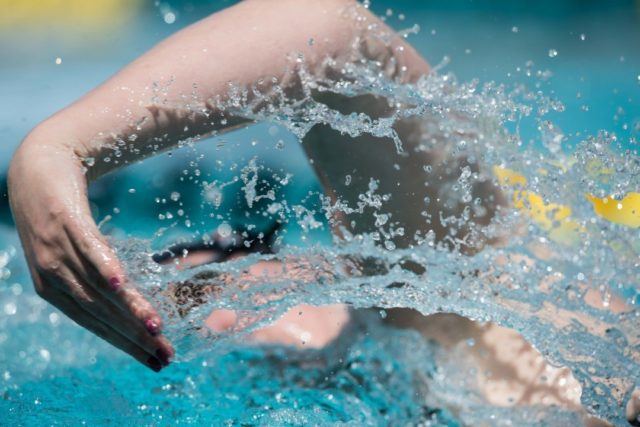By Livio Cocozza on SwimSwam

Swimming school differs from competitive swimming in terms of the intensity of workload and the number of competitions held during the season, as well as all aspects related to professionalism such as stress, salary, sponsors, staff, etc.
Swimming school is the key to a club’s success in water polo and swimming, while synchronized swimming and diving focus more on dry land training. In swimming school, the main objective is to teach young athletes not to fear water but to instead see the pool as a fun and comfortable environment with its rules and challenges. On the other hand, in competitive swimming, all specific technical aspects for each stroke and race are emphasized. We know that the swimming stroke itself can be broken up into set phases agreed upon by all federations. What are the differences in technique of swimming strokes between a swimming school and a competitive environment?
SWIMMING SCHOOL: We have four phases.
We always start in the water – in the streamline position. Here, arms are extended straight out in front of the head, looking towards the bottom of the pool. Initially, these steps can be taught with the support of high-intensity kicking drills or without kicking but with support such as a pull buoy, etc.
1st Phase: Lateral rotation of the head to face away from the arm that remains stationary in front and will be used for buoyancy (example: rotation to the right with the head resting on the left arm). In this phase, we help the young athlete to have time to take a breath and thus control the swimming stroke technique as best as possible. When the head rotates, the athlete is taught to keep one eye underwater and one above to avoid excessive rotation.
2nd Phase: Arm moving from front to back (we have the phases of catch and then push) completing the underwater arm stroke phase. The head remains rotated to allow for breathing with the head resting on the opposite arm from where one breathes. The support of high-intensity kicking is essential to facilitate progression and to keep the body as close to the water’s surface as possible- because when the head is rotated, the legs tend to sink.
3rd Phase: The head submerges, looking at the pool bottom and exhaling the air previously taken in. In this phase, the arm begins to exit the water to start the recovery phase, while the opposite arm remains as close as possible to the water surface, next to the ear.
4th Phase: Still with the head in the water, exhaling, the arm completes its recovery phase out of the water by passing near and above the head, re-entering the water with the hand in front of the head. In this phase, we can have two types of hand entry:
Catch up: The arm entering the water (finishing the recovery phase) touches the opposite arm, which serves as support for the head, which will start the underwater movement.
Semi catch up: When the arm has almost passed the head and the hand is close to the water surface, the opposite arm, which supported the head rotation, begins its action underwater. In the fourth phase, the arm rotating out of the water completes the recovery phase by returning to the initial position in front of the head, above or near the hand that was stationary to support breathing.
The competitive swimming stroke differs in 3 phases:
1st Phase: Starting the arm with the head in a diagonal position to create the wave flow (hydrodynamics). Each swimmer can differentiate the head position based on their abilities and stroke discipline in which they are competing.
2nd Phase: In the final phase of the underwater arm push, the head will turn to breathe. In this phase, the breathing time is much faster compared to swimming school. The head will rest on the opposite arm from the one that is moving. The head must rotate while remaining as close as possible to the water surface to avoid excessive body rotation and increased resistance during forward motion.
3rd Phase: With the head in water, exhaling, the arm completes its recovery phase out of the water to start the semi catch up phase.
Read the full story on SwimSwam: What Are The Technique Differences Between a Swim School and a Competitive Club?




No comments:
Post a Comment